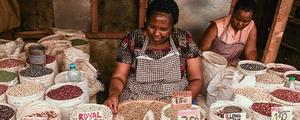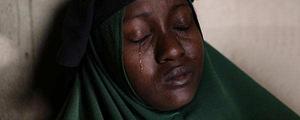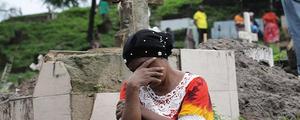Story Highlights
- 54% of 15- to 29-year-olds see improving living standards
- 40% say local economy is getting better
WASHINGTON, D.C. -- Like their counterparts around the world, younger generations in sub-Saharan Africa are typically more hopeful than older generations about a lot of things.
Gallup surveys in 2021 showed that young people across sub-Saharan Africa remained more optimistic than their elders, even as they all faced a host of daunting challenges, from armed conflicts to COVID-19 surges to economic disruption. However, young people's hopes dimmed along with everyone else's -- particularly on issues related to the economy.
As 2022 shapes up to be even worse, with food costs expected to rise as much as 50% because of the war in Ukraine, the question becomes whether young people's optimism in sub-Saharan Africa can survive another assault.
More Than Half of Young Sub-Saharan Africans Saw Living Standards Improving
More than half of 15- to 29-year-olds in sub-Saharan Africa (54%) said their standard of living was getting better in 2021, compared with 42% of those aged 30 to 49 and 36% of those aged 50 and older.
Young people's greater optimism is consistent with what Gallup has found in sub-Saharan Africa since Gallup started conducting surveys there in 2006. The 54% of young people who say living standards are getting better is slightly lower than the high of 59% in 2018, but it is still on the higher end of the decade-plus trend.
Young people's optimism varies across sub-Saharan Africa. Fifteen- to 29-year-olds are most optimistic in Burkina Faso and Senegal, where 74% say their standard of living is improving. Alternatively, young adults are least optimistic in Zambia and Zimbabwe, where 42% see standards getting better.
In the run-up to the country's elections in 2021, Zambia experienced civil unrest and political violence that may have hurt young people's optimism about the future. Zimbabwe also suffered from civil unrest and political violence in 2021, as well as an ongoing water and sanitation crisis.
Local Economic Outlook Still Strongest Among Younger Sub-Saharan Africans
Young people in sub-Saharan Africa remain more positive than their older counterparts about local economic conditions: 40% of those aged 15 to 29 say economic conditions in their city or area are getting better, outpacing the 33% who say so among those aged 30 to 49 and the 30% among those aged 50 and older.
The youngest adults have been more buoyant than other age groups on their local economy throughout much of Gallup's trend. The current 40%, however, is well off their all-time high of 50% in 2018.
Young adults in Mauritius and Burkina Faso are the most optimistic about the trajectory of their local economy, with 63% and 62%, respectively, reporting that conditions are getting better. At the same time, young adults in Malawi (26%) and Sierra Leone (21%) are the most pessimistic.
Malawi's economy was hit particularly hard by the COVID-19 pandemic; inflated food prices potentially contributed to low levels of economic optimism. In Sierra Leone, the economy contracted substantially during the pandemic, and that contraction lingered into 2021 -- again, likely affecting optimism about local economic conditions.
Bottom Line
Optimism among sub-Saharan Africans tends to decrease by age group, with the youngest adults the most optimistic. These individuals have generally been the most likely to say conditions are improving, or will improve over time, throughout Gallup's trends on key aspects of life in their country. Meeting the expectations for improvement among these youngest adults may be one of the most difficult challenges for governments throughout this region.
The current challenges are likely to be compounded in the coming months by rising food prices due to disruption created in the market by the war in Ukraine. These higher food costs may further sap optimism; in 2021, 65% of adults in the region, including 63% of those aged 15 to 29, had already reported having lacked money for food in the previous 12 months.
If optimism for the future among young sub-Saharan Africans is dashed, it may result in further unrest and intensified political turmoil among the disaffected throughout the region. It is incumbent on policymakers in the region and on young adults themselves to ensure their optimism for a better life becomes a reality, despite these challenges.
To stay up to date with the latest Gallup News insights and updates, follow us on Twitter.
For complete methodology and specific survey dates, please review Gallup's Country Data Set details.
Learn more about how the Gallup World Poll works.




